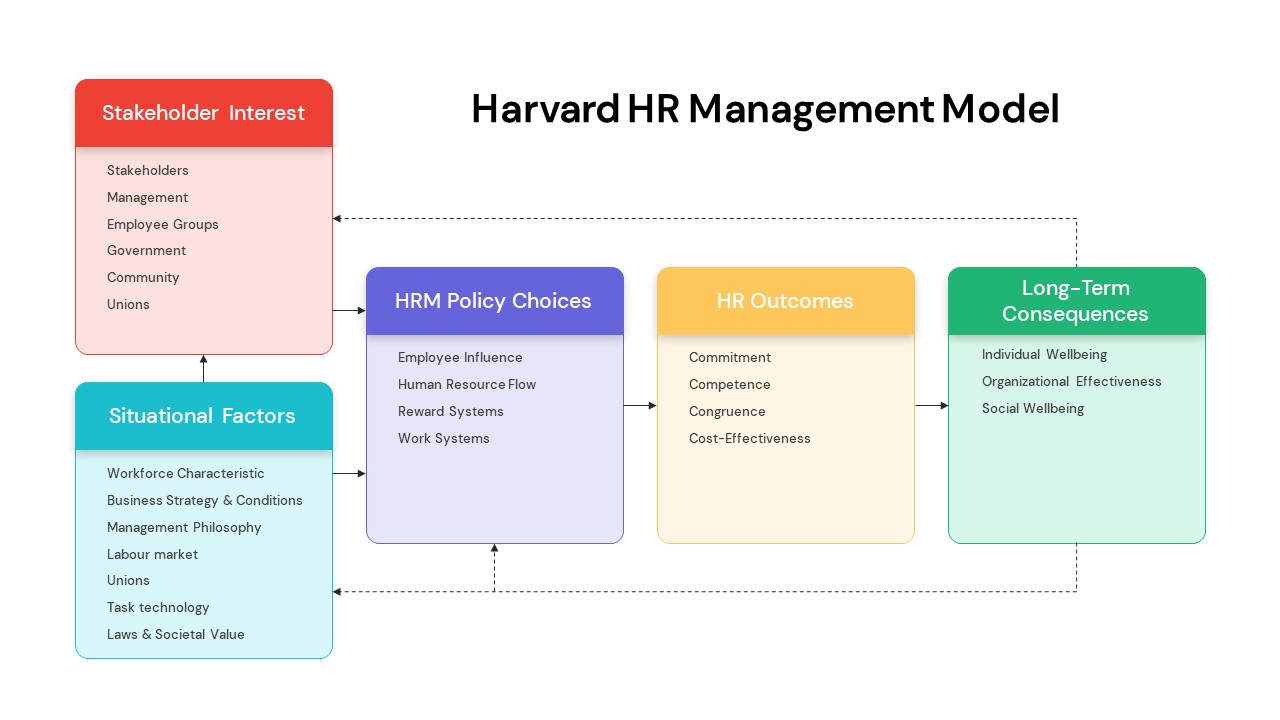Harvard HR Management Model Powerpoint template

Description
Clarify your HR strategy with this Harvard HR Management Model diagram that maps the relationships between Stakeholder Interests, Situational Factors, HRM Policy Choices, HR Outcomes, and Long-Term Consequences. Five colour-coded rectangles—Stakeholder Interest (red), Situational Factors (teal), HRM Policy Choices (purple), HR Outcomes (yellow), and Long-Term Consequences (green)—are connected by direct and feedback arrows to illustrate how organizational context and stakeholder needs inform policy decisions that yield outcomes and final consequences, and how those feed back into the model for continuous refinement. Flat icons and dashed return loops reinforce the iterative nature of strategic HR planning, while the minimalist white background and generous margins ensure focus on pivotal content.
The template is fully editable in both PowerPoint and Google Slides. Designed with organized layers and intuitive placeholders, you can easily customize each box’s title, description, and icon, adjust arrow styles, or recolor shapes to match brand guidelines. Master-slide integration guarantees uniform formatting across large decks and simplifies remote collaboration by enabling mass updates. Scale and reposition elements to accommodate additional content, embed performance metrics alongside descriptive text, or swap to dotted lines for secondary feedback loops without compromising overall design integrity.
Ideal for leadership presentations, HR governance workshops, and strategic planning sessions, this asset empowers teams to communicate complex HR frameworks with clarity and impact. Use it to guide discussions on workforce planning, policy formulation, or organizational change initiatives. Its flexible structure also lends itself to other strategic models—such as competency frameworks, governance matrices, or resource allocation grids—simply rename the sections and replace icons to suit diverse business narratives, ensuring persuasive, data-driven storytelling that aligns stakeholders and drives organizational success.
Who is it for
HR leaders, organizational development specialists, and management consultants will leverage this slide to align teams on policy design, communicate governance frameworks, and frame long-term organizational goals. Executives, talent managers, and cross-functional stakeholders can use it to explore trade-offs between stakeholder priorities and business objectives, ensuring transparent decision-making.
Other Uses
Repurpose this model to illustrate competency frameworks, governance matrices, resource allocation grids, or risk management cycles by renaming segments, updating descriptions, and swapping icons for relevant visuals.
Login to download this file

















































